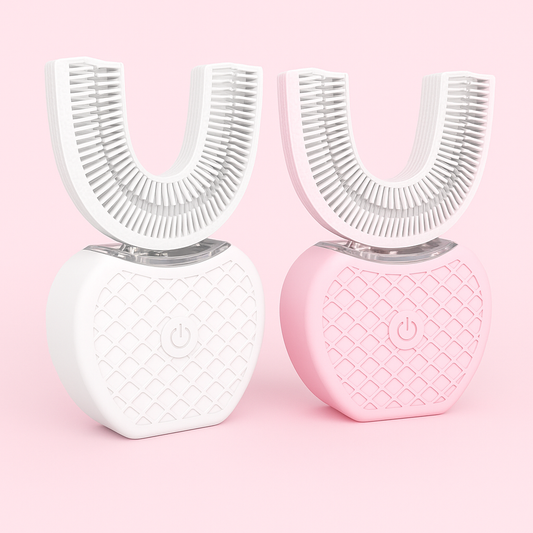Eco-Friendly Whitening: A modern approach to a brighter, healthier smile
More consumers are choosing toothpaste without fluoride and seeking natural actives like xylitol to support oral health. If you want whiter teeth without compromising on sustainability or ingredient transparency, this guide covers everything: how xylitol works, pros and cons of fluoride-free formulas, whitening mechanisms, ingredient checklists, daily routines, safety notes (including "toothpaste zit" issues), and where to find trusted products — including curated selections for the best toothpaste for whiter teeth.
Why choose toothpaste without fluoride and with xylitol?
- Personal preference or medical reasons: Some people avoid fluoride for personal or pediatric ingestion concerns and prefer fluoride toothpaste free options.
- Effective bacterial control without fluoride: Xylitol is a sugar alcohol that reduces acid-producing bacteria and supports a healthier oral environment.
- Eco and ingredient transparency: Many fluoride-free lines emphasize recyclable packaging, minimal synthetic additives, and greener sourcing.
How xylitol helps support healthy teeth
Xylitol is not metabolized by Streptococcus mutans, the primary cavity-causing bacterium. Regular exposure to xylitol can reduce bacterial adhesion and acid production in the mouth, creating an environment that favors remineralization. While xylitol alone doesn’t replace fluoride’s well-documented enamel-strengthening action, it’s a valuable ingredient in fluoride-free toothpaste formulations that aim to be both protective and gentle.
What actually whitens teeth in toothpaste?
Whitening in toothpastes typically targets surface stains rather than intrinsic color changes. Ingredients and mechanisms include:
- Physical abrasives: Hydrated silica, calcium carbonate, and low-level baking soda act as mild polishing agents to remove surface staining from coffee, tea, and smoking.
- Chemical agents: Low-concentration hydrogen peroxide or enzymes (papain, bromelain) can break down stain molecules. Eco-friendly formulations usually keep concentrations low to prevent sensitivity.
- Surface modifiers: Ingredients that reduce future stain adhesion or enhance shine, sometimes marketed as optical brighteners.
- Active antimicrobial ingredients: Ingredients like xylitol and certain essential oils reduce stain-associated biofilm and help maintain a cleaner surface.
Niacinamide toothpaste and emerging actives
Niacinamide (vitamin B3) appears in some oral-care products for its anti-inflammatory and barrier-supporting properties. Research is ongoing; while niacinamide may soothe gum tissues and support overall oral health, it’s not yet established as a primary whitening agent. Consider niacinamide toothpaste as a complementary option when sensitivity or gum health is a priority.
Pros and cons: fluoride-free vs fluoride toothpaste
-
Pros of fluoride-free with xylitol:
- Reduced risk of swallowing fluoride for children or people who avoid it.
- Often more natural formulations with sustainable packaging.
- Xylitol provides anti-cavity benefits without fluoride.
-
Cons:
- Fluoride has strong, long-standing evidence for remineralization — fluoride-free options may not match that benefit.
- For high-caries-risk individuals, dental professionals often recommend fluoride or other clinically proven treatments.
How to choose the best toothpaste without fluoride and with xylitol
Use this checklist when scanning labels or product pages:
- Look for xylitol listed among the first ingredients or with a disclosed concentration.
- Check for gentle abrasives (hydrated silica, low-level calcium carbonate) rather than overly aggressive particles.
- Identify any mild chemical whiteners or enzymes and confirm low concentrations to limit sensitivity.
- Search for third-party certifications (cruelty-free, vegan, recyclable packaging) if eco-credentials matter to you.
- Read user reviews focusing on whitening results and sensitivity outcomes — the best toothpaste whitening teeth will show consistent user satisfaction without increased sensitivity.
Daily routine: maximize whitening and protect enamel
- Brush twice daily for two minutes using a soft-bristled brush and a pea-sized amount of toothpaste.
- Floss daily and consider an alcohol-free mouthwash to reduce staining biofilm.
- If drinking staining beverages (coffee, tea, red wine), rinse or drink water afterward to lower surface stain formation.
- Use whitening toothpastes for surface stains; for deeper stains, consult a dentist about treatments for teeth such as professional bleaching.
- Rotate products if you notice increased sensitivity — combine a whitening toothpaste with a sensitivity formula or reduced-frequency use as recommended by your dentist.
Addressing "toothpaste zit" and topical skin reactions
People sometimes report acne-like bumps or irritation called "toothpaste zit" when toothpaste contacts facial skin. Reasons and solutions:
- Most cases are due to irritation from essential oils, sodium lauryl sulfate (SLS), or strong flavoring agents.
- Prevent by keeping toothpaste off the skin, rinsing thoroughly, and using a gentle, SLS-free toothpaste if you have sensitive skin.
- If a pimple appears near the mouth, avoid applying toothpaste as an acne remedy — toothpaste ingredients can worsen inflammation. Use dermatologist-recommended acne treatments instead.
Complementary treatments and when to see a dentist
Whitening toothpaste and a good routine are effective for surface staining, but certain situations warrant professional care:
- Intrinsic discoloration (e.g., from trauma, medication, or deep staining) usually requires dentist-prescribed whitening or restorative treatments.
- Persistent sensitivity, gum recession, or cavities need dental evaluation before using whitening agents.
- Professional cleanings remove calculus and stubborn stains that toothpaste alone cannot.
Eco-friendly packaging and ethical sourcing
When searching for the best toothpaste for whiter teeth that aligns with sustainability goals, look for:
- Recyclable tubes and caps or refill programs
- Post-consumer recycled materials in packaging
- Vegan and cruelty-free certifications
- Transparent ingredient sourcing and reduced plastic waste initiatives
Frequently asked questions (SEO-friendly answers)
- Can toothpaste without fluoride really prevent cavities? Toothpaste with xylitol can reduce harmful bacteria and acid production, which supports cavity prevention, but fluoride remains one of the most researched agents for remineralization. Consult your dentist for personalized advice.
- Will my teeth be dramatically whiter with eco-friendly toothpastes? Most eco-friendly whitening toothpastes remove surface stains effectively. For dramatic changes, professional whitening or dentist-prescribed treatments are more powerful.
- Is niacinamide toothpaste worth trying? Niacinamide may support gum health and inflammation control. It’s a promising complementary ingredient but not a primary whitening agent.
- Which keywords should I search when shopping? Use keywords like good whitening toothpaste, toothpaste with xylitol, toothpaste that whitens teeth, and fluoride toothpaste free to find suitable options online.
Shopping smart: where to find reliable fluoride-free whitening options
Many brands now offer high-quality toothpaste without fluoride and with xylitol that are formulated to whiten teeth gently while prioritizing eco-credentials. For a curated selection of verified, eco-conscious oral-care products, check out Havana Body’s range. They highlight formulations that combine xylitol, mild abrasives, and sustainable packaging — search Havana Body for the toothpaste with xylitol and the best whitening toothpaste.
Practical product-comparison tips
- Compare ingredient lists: prioritize xylitol and mild abrasives and avoid unnecessary sulfates or harsh flavorings if you have sensitive skin.
- Check usage guidance: some whitening formulations recommend limited use to avoid sensitivity buildup.
- Read verified reviews focusing on whitening performance and effects on sensitivity and gum health.
- Confirm the brand’s eco-claims — look for certifications or transparent reporting on packaging and sourcing.
Final thoughts and call to action
Choosing an eco-friendly whitening toothpaste without fluoride and with xylitol is a balanced way to aim for whiter teeth while honoring health and environmental values. These formulations can reduce surface stains, support healthier oral flora, and align with sustainable purchasing choices.
If you’re ready to explore trusted, sustainable options that emphasize xylitol and gentle whitening, visit Havana Body to browse curated formulas and discover the best toothpaste for whiter teeth. Whether you search for "toothpaste without fluoride," "good whitening toothpaste," or "toothpaste that whitens teeth," Havana Body offers eco-conscious choices that help you achieve a brighter smile with ingredient transparency and ethical packaging. Check their selection today and consider adding an eco-friendly whitening paste to your oral-care routine.
Disclaimer
This article is informational and not a substitute for professional dental advice. For personalized recommendations, especially for children, people with high cavity risk, or those experiencing sensitivity or gum disease, consult your dentist or a qualified healthcare provider.


